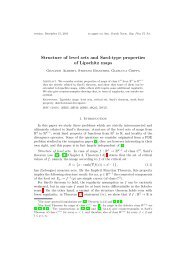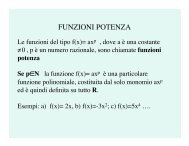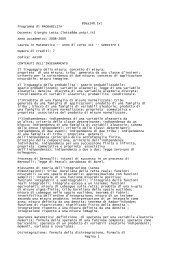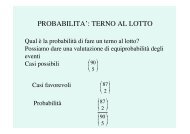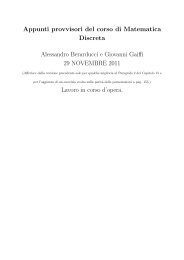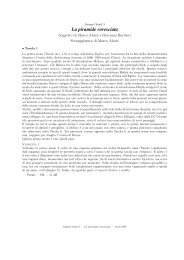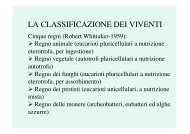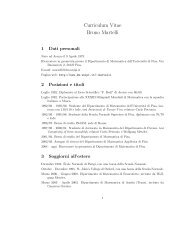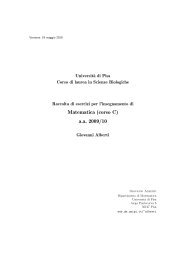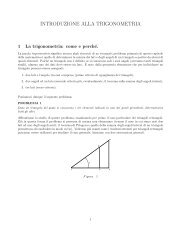Immersioni aperte in dimensione infinita - Dipartimento di Matematica
Immersioni aperte in dimensione infinita - Dipartimento di Matematica
Immersioni aperte in dimensione infinita - Dipartimento di Matematica
Create successful ePaper yourself
Turn your PDF publications into a flip-book with our unique Google optimized e-Paper software.
104 Mappe <strong>di</strong> Fredholm: teoria non l<strong>in</strong>eare<br />
osserviamo che<br />
|unk − unl |H ≤<br />
1 s<br />
0<br />
0<br />
|ynk (r) − ynl (r)|H drds ≤ sup |ynk<br />
r∈[0,1]<br />
(r) − ynl (r)|H −−−−−−→<br />
nk,nl→∞ 0.<br />
Segue che la successione (unk ) è <strong>di</strong> Cauchy e perciò è convergente <strong>in</strong> H. Ciò implica che l’operatore<br />
def<strong>in</strong>ito dall’<strong>in</strong>tegrale nell’equazione E.1.5 è compatto e conseguentemente,<br />
˜σ −1<br />
1 ◦ d(exp p)v = U(1) = id + K,<br />
<strong>in</strong> cui K : H → H è un operatore compatto. Siccome ˜σt è un isomorfismo, segue che d(exp p)v è un<br />
operatore <strong>di</strong> Fredholm <strong>di</strong> <strong>in</strong><strong>di</strong>ce zero.<br />
IMMERSIONI APERTE IN DIMENSIONE INFINITA



